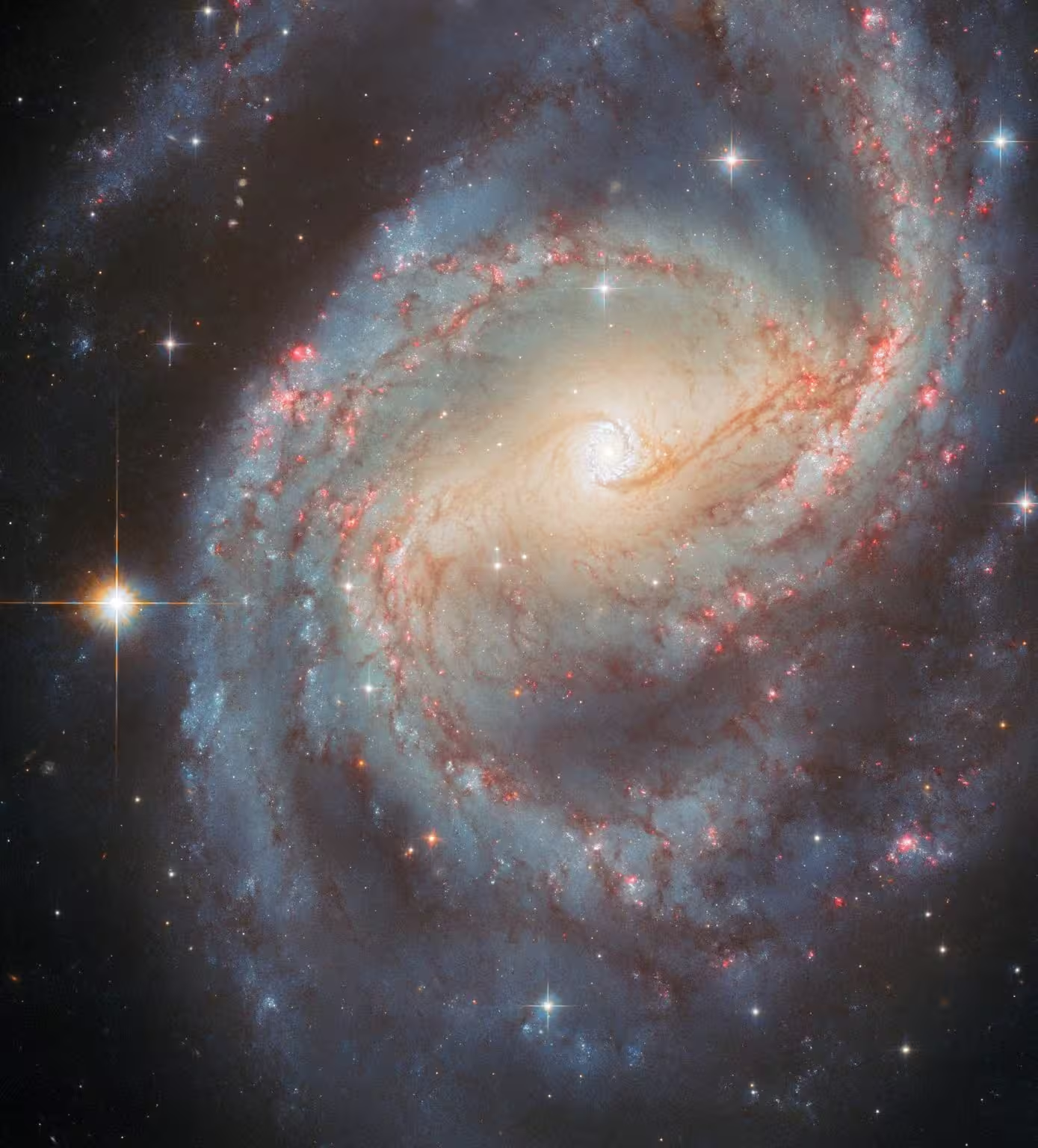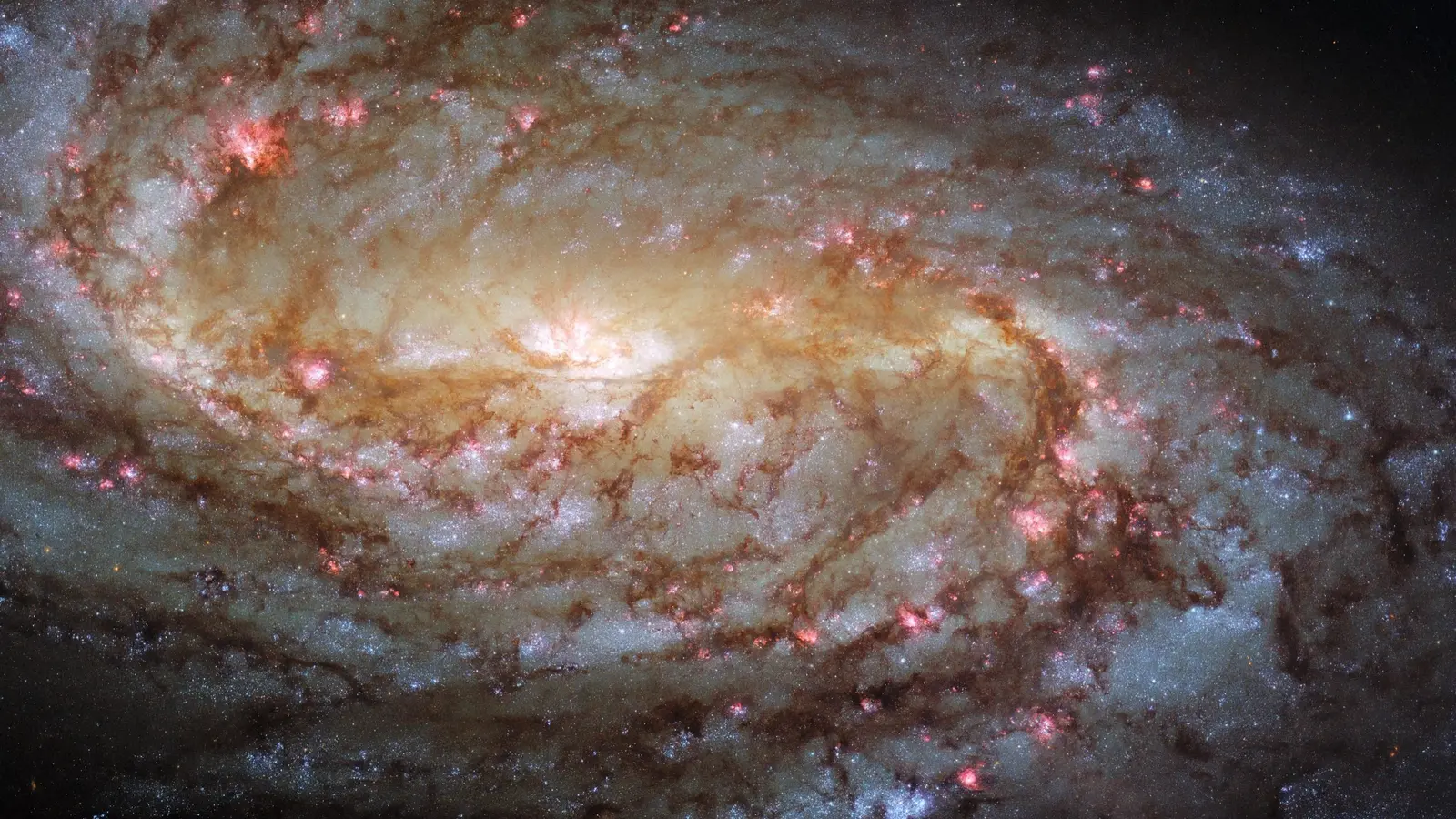3 Minutes
About 70 million light-years from Earth, the spiral galaxy NGC 6951 offers a vivid lesson in how galactic structure drives star formation. Hubble’s latest view highlights a glowing circumnuclear ring where inflowing gas sparks waves of stellar birth.
A barred spiral with a luminous heart
NGC 6951 sits in the constellation Cepheus and presents a textbook example of a barred spiral galaxy: sweeping arms peppered with blue young stars and red nebulae, lanes of dark dust, and a bright, older stellar population concentrated in the center. The central zone appears elongated—evidence of a slowly rotating stellar bar that reshapes the motion of gas and stars across the galaxy.
That bar isn’t merely an aesthetic feature. It acts like a galactic conveyor belt, funneling cold gas from the spiral arms toward the nucleus. Where the inflowing material piles up, a pale bluish-white circumnuclear ring has formed. Hubble’s high-resolution imaging exposes both the ring and the dark dust lanes that trace the gas as it travels along the bar and feeds the central region.
Inside the starburst ring: a busy stellar nursery
In the ring—roughly 3,800 light-years across—conditions are ripe for star formation. Hubble observations have identified more than 80 candidate star clusters embedded in the ring, many younger than 100 million years. The ring itself appears long-lived: models and age estimates suggest it has been active for about 1 to 1.5 billion years, producing multiple generations of stars over cosmic time.

Why does this matter? Circumnuclear starburst rings are laboratories for understanding how galaxies evolve. They concentrate gas, boost local star-formation rates, and can affect the growth of central black holes by modulating how much material reaches the nucleus. NGC 6951 has also been a frequent target for transient hunters—over time it has hosted five or six recorded supernovae, giving astronomers direct probes of massive-star evolution in different ring environments.
What Hubble and astronomers are learning
Repeated Hubble campaigns have mapped the dust distribution, traced cluster ages, and monitored variable events in NGC 6951’s core. These observations help distinguish between star formation driven by secular processes—like bars—and that triggered by external events such as galaxy interactions. The combination of resolved imaging and multiwavelength follow-up allows scientists to measure cluster masses, estimate gas inflow rates, and model the ring’s stability over time.
Imagine watching a city from above as traffic lanes funnel commuters into a stadium—except here the commuters are cold clouds of gas, and the stadium lights are newborn stars. NGC 6951 offers that cinematic scene on a galactic scale, and Hubble continues to return to it because each visit refines our picture of how disks, bars, and rings shape stellar populations across billions of years.
Source: scitechdaily


Leave a Comment